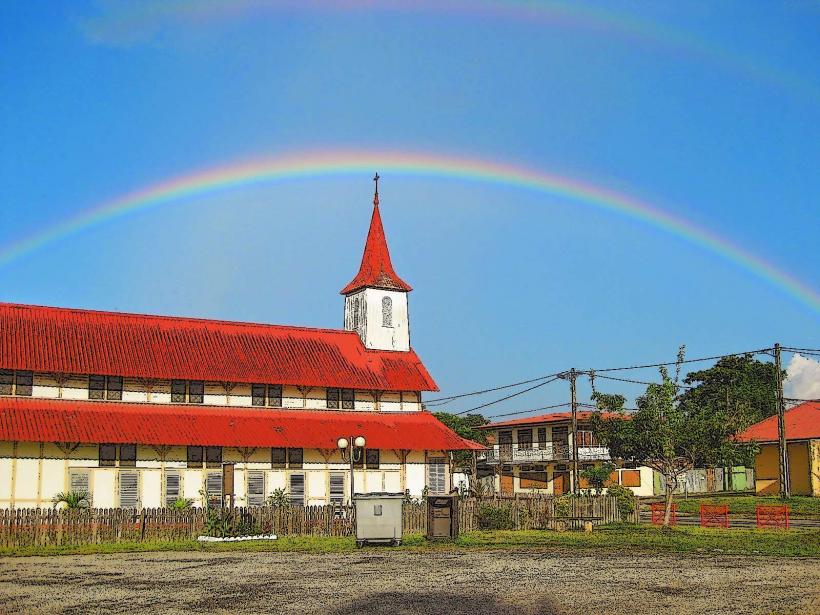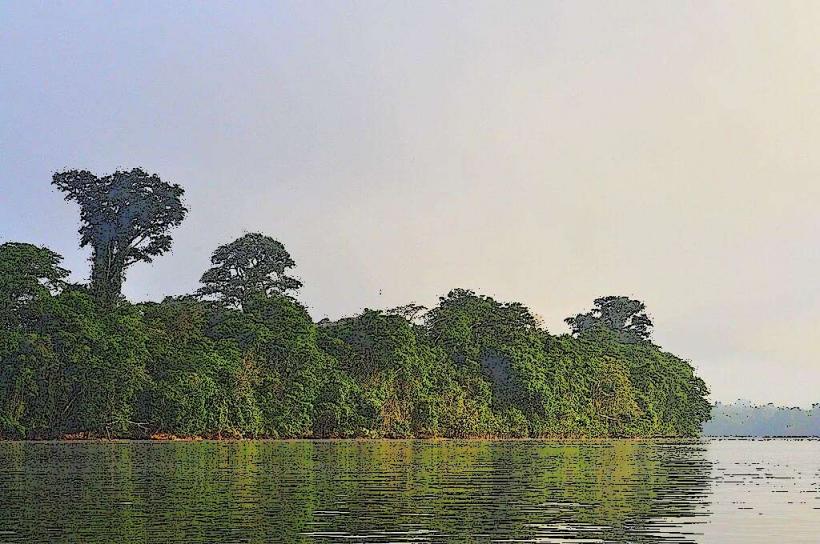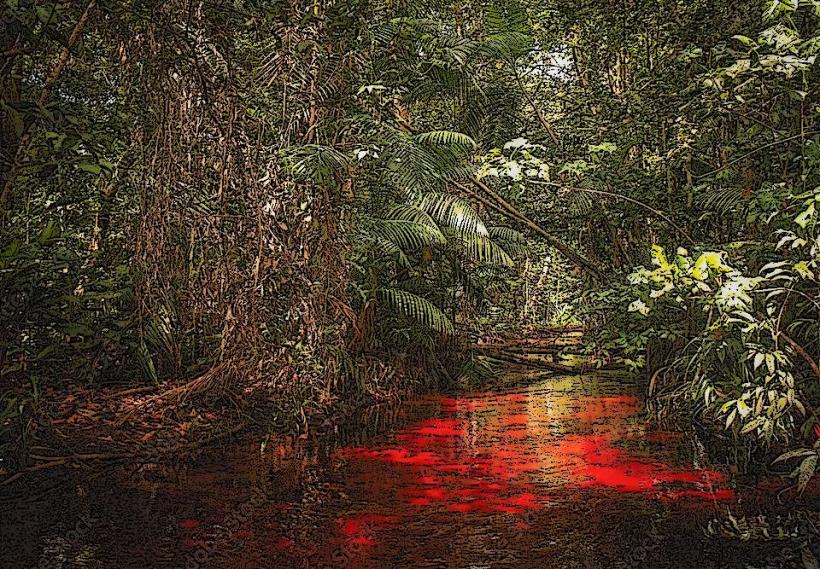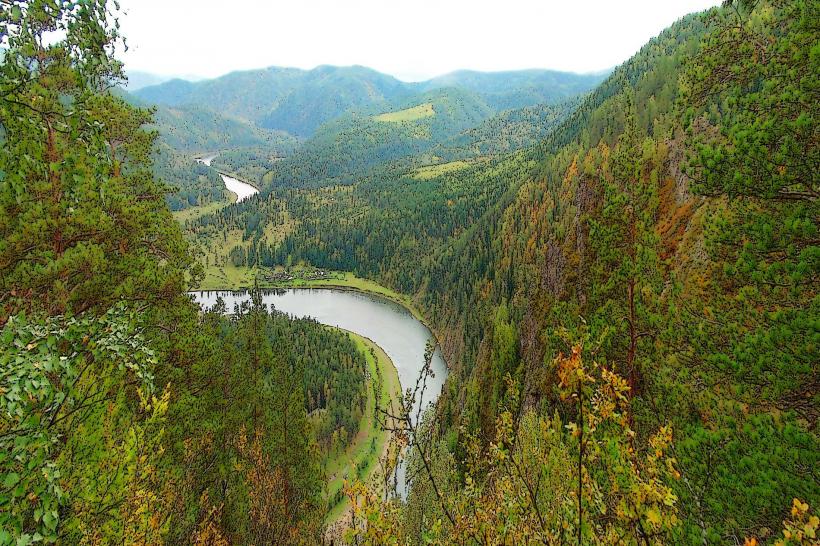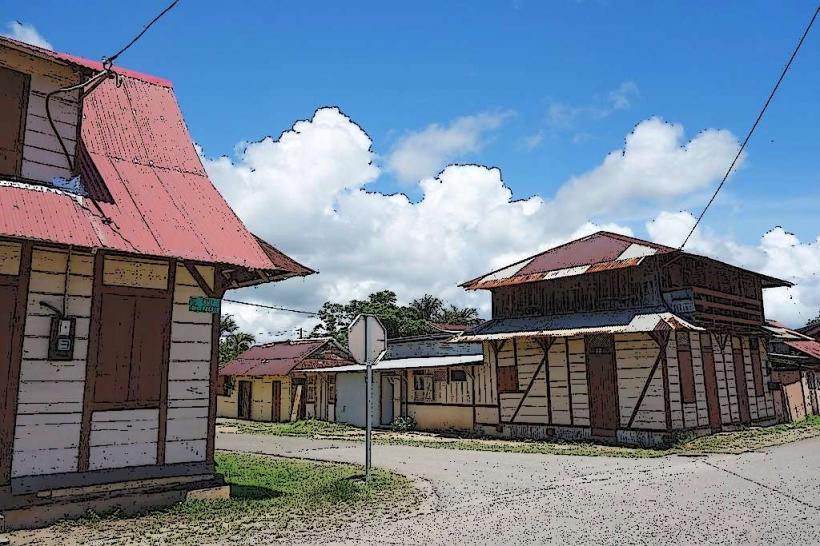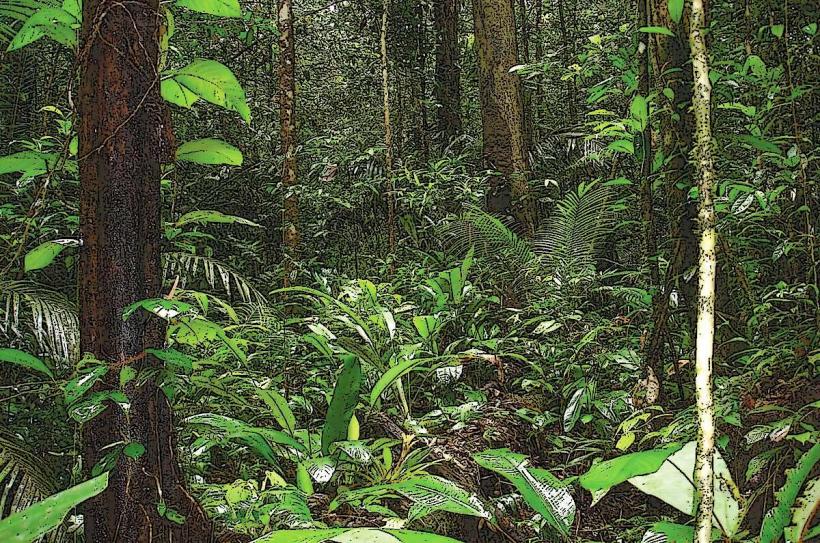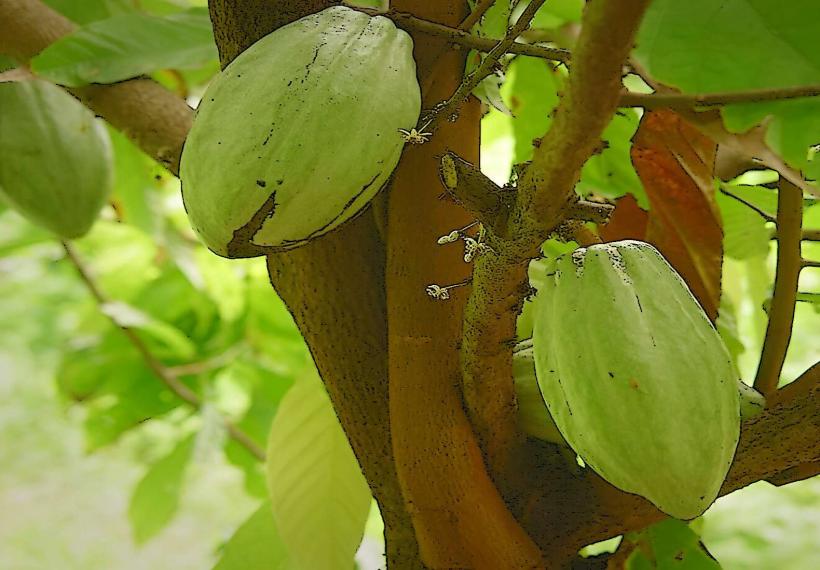Information
Landmark: Guiana Amazonian Park ReserveCity: Iracoubo
Country: French Guiana
Continent: South America
The Guiana Amazonian Reserve (French: Réserve Amazonienne de Guyane) is a protected area in French Guiana, part of France's overseas territories. This vast region, located in the northeastern part of South America, is one of the most ecologically significant and biodiverse areas on the planet. The reserve is a crucial part of the Amazon Rainforest and is recognized for its rich flora and fauna, many of which are endemic to the region.
Geographic Location and Size
The Guiana Amazonian Reserve is located in French Guiana, covering approximately 33,900 square kilometers (13,100 square miles), or nearly half of the territory of French Guiana. It extends along the border with Brazil and is part of the larger Amazon Basin, which spans across South America.
- The reserve lies mostly in the southwestern part of French Guiana and includes both lowland and montane ecosystems.
- The area is characterized by dense tropical rainforests, wetlands, rivers, and savannas, which contribute to the region’s extraordinary biodiversity.
The Guiana Amazonian Reserve was officially established in 2001 and is part of France’s efforts to preserve the Amazon ecosystem. It is also recognized as part of the larger Guiana Shield, a globally significant ecological region.
Ecological Significance
The Guiana Amazonian Reserve is one of the most ecologically rich and biodiverse regions on Earth. It is home to a variety of ecosystems that provide essential services to the environment, such as carbon sequestration, climate regulation, and water purification.
1. Flora
- Tropical Rainforest Vegetation: The reserve is primarily covered by tropical rainforest, with towering trees, vines, epiphytes, and diverse understory plants.
- Mangroves and Wetlands: The reserve includes significant wetland areas, such as mangroves and riverine forests, which support a wide range of plant species adapted to waterlogged soils and brackish conditions.
- Medicinal Plants: Like much of the Amazon, the Guiana Amazonian Reserve is rich in plant species that are of medicinal and cultural significance to local communities, particularly indigenous peoples.
2. Fauna
The reserve is home to an incredible array of animal species, many of which are rare or endemic to the region:
- Mammals: Large mammals like jaguars, pumas, and giant river otters are found in the reserve. Smaller mammals such as agoutis, tapirs, and armadillos also inhabit the area.
- Birds: The Guiana Amazonian Reserve is a birdwatcher's paradise, with a diverse population of birds such as harpy eagles, toucan species, parrots, macaws, and herons.
- Reptiles and Amphibians: The wetlands and rivers of the reserve host species like caimans, anacondas, and poison dart frogs.
- Insects: The region is also home to a wide variety of insects, including many species of butterflies, beetles, and mosquitoes that play crucial roles in pollination and the food chain.
3. Rivers and Water Systems
The reserve is crisscrossed by numerous rivers and streams that are vital for the region’s ecology. The Oyapock River, which forms part of the border with Brazil, is one of the key rivers flowing through the reserve. These water systems support the region's aquatic biodiversity, including fish, amphibians, and the iconic Amazonian river dolphin.
Indigenous Communities and Human Presence
The Guiana Amazonian Reserve is home to several indigenous communities, including Wayana, Teko, Palikur, and Arawak peoples, who have lived in the region for centuries. These communities traditionally practice subsistence agriculture, hunting, and fishing and have a deep knowledge of the local ecosystems and biodiversity.
The French government has created a framework for co-management of the reserve with indigenous and local communities, allowing them to have a role in the governance and protection of the area. These communities are vital stewards of the land, maintaining sustainable practices that ensure the continued health of the rainforest and its wildlife.
Environmental Protection and Conservation Efforts
The Guiana Amazonian Reserve is part of France's broader conservation initiatives aimed at preserving the Amazon ecosystem. Key aspects of the reserve's conservation efforts include:
1. Biodiversity Conservation
The reserve is crucial for the conservation of species and ecosystems that are threatened by human activities such as logging, mining, and agriculture. The Guiana Amazonian Reserve helps to protect large swaths of unspoiled rainforest, which is vital for the survival of many species, including those that are endemic to the region and threatened by climate change.
2. Ecotourism
Ecotourism is an important industry in the Guiana Amazonian Reserve, offering opportunities for people to experience the region's natural beauty while supporting sustainable livelihoods for local communities. Sustainable tourism can help raise awareness of the importance of conserving the Amazon rainforest and its unique biodiversity.
3. Combating Illegal Activities
One of the significant challenges in the reserve is illegal gold mining, which has led to environmental degradation, water pollution, and deforestation. French authorities have been working with local governments and environmental organizations to tackle this problem through surveillance, law enforcement, and the promotion of sustainable livelihoods.
4. Research and Monitoring
Ongoing research and monitoring of the reserve’s ecosystems and wildlife are essential to understanding the health of the environment and guiding conservation efforts. Research is conducted by a variety of organizations, including universities, conservation NGOs, and government agencies.
Challenges
Despite its protected status, the Guiana Amazonian Reserve faces several challenges:
- Illegal Gold Mining: One of the biggest threats to the reserve is illegal gold mining. This activity causes environmental degradation, particularly through mercury pollution in rivers, and leads to deforestation and habitat loss.
- Deforestation: While the reserve has been protected from large-scale industrial deforestation, illegal logging and land conversion for agriculture, especially in surrounding areas, continue to pose a threat to the integrity of the reserve.
- Climate Change: Like much of the Amazon, the Guiana Amazonian Reserve is vulnerable to the impacts of climate change, such as shifting rainfall patterns, rising temperatures, and altered flood cycles, which could disrupt ecosystems and biodiversity.
Global Significance
The Guiana Amazonian Reserve is part of the larger Amazon Rainforest, often referred to as the "lungs of the Earth" due to its role in absorbing carbon dioxide and producing oxygen. Protecting this area is critical not only for the local and regional environment but for global climate regulation.
1. Carbon Storage: The dense rainforests of the reserve act as a carbon sink, helping to mitigate the effects of climate change by absorbing and storing large amounts of carbon dioxide.
2. Biodiversity Hotspot: As one of the most biodiverse regions in the world, the reserve plays a crucial role in preserving global biodiversity. It is home to countless species that are essential to the stability of ecosystems and to the provision of ecosystem services.
Conclusion
The Guiana Amazonian Reserve is an ecological treasure in French Guiana, offering essential conservation benefits to the global environment while supporting local indigenous communities. Despite challenges like illegal mining, climate change, and deforestation, the reserve remains a vital part of the Amazon Basin, helping to protect one of the world’s most biodiverse and ecologically significant ecosystems. Efforts to conserve the reserve’s natural beauty and biodiversity, combined with sustainable development initiatives, are critical for the region’s future and for the health of the planet.

